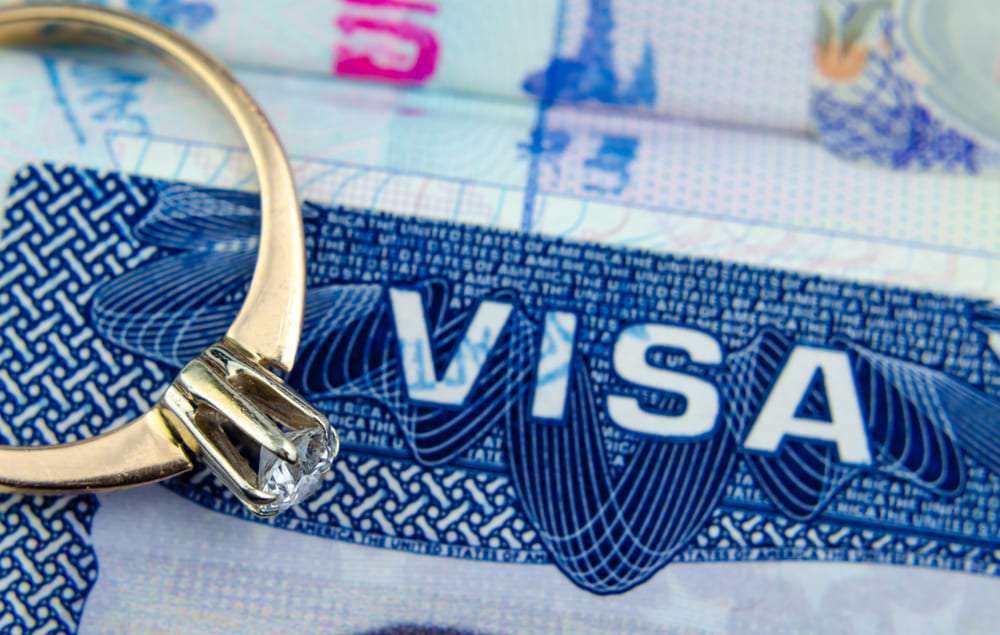A fiancé visa is a type of visa that allows a person to enter a country to marry their partner, who is a citizen or legal resident of that country. In the United States, the fiancé visa is known as the K-1 visa and is specifically designed for foreign nationals planning to marry U.S. citizens. This blog will explore the purpose, eligibility requirements, application process, and other key aspects of the fiancé visa.
Purpose of the Fiancé Visa
The fiancé visa aims to reunite engaged couples and allow them to marry and begin their life together in the sponsor’s country. In the United States, the K-1 visa allows the foreign fiancé to enter the country and marry their U.S. citizen partner within 90 days of arrival.
This type of visa is particularly important because:
- It provides a legal path for couples separated by international borders to unite.
- It ensures the foreign fiancé has legal status while preparing for marriage.
- It creates a pathway for the foreign fiancé to apply for permanent residency after the wedding.
Who Is Eligible for a Fiancé Visa?
To qualify for a fiancé visa, both the U.S. citizen sponsor and the foreign fiancé must meet certain eligibility criteria. These include:
Citizenship Requirement
The sponsor must be a U.S. citizen. Lawful permanent residents (green card holders) are not eligible to sponsor a fiancé for a K-1 visa.
Intent to Marry
Both individuals must have the genuine intention to marry within 90 days of the foreign fiancé’s arrival in the United States. Evidence such as venue bookings or wedding invitations can help demonstrate this intent.
In-Person Meeting
The couple must have met in person at least once in the two years prior to the visa application. Exceptions may apply in extreme circumstances, such as cultural traditions or financial hardship, but must be well documented.
Legal Capacity to Marry
Both individuals must be legally free to marry. If either person was previously married, they must provide proof of divorce, annulment, or the death of a previous spouse.
How to Apply for a Fiancé Visa
The process of obtaining a fiancé visa involves several steps, each requiring careful attention to detail. Here is an overview of the U.S. process:
Submit the Petition
The U.S. citizen sponsor must submit Form I-129F, Petition for Alien Fiancé, to U.S. Citizenship and Immigration Services (USCIS). This form establishes the relationship and demonstrates eligibility for the K-1 visa.
USCIS Review
Once USCIS receives the petition, they review it for completeness and accuracy. If approved, the petition is sent to the National Visa Center (NVC), and then to the U.S. embassy or consulate in the foreign fiancé’s home country.
Visa Application
The foreign fiancé must complete Form DS-160, the standard nonimmigrant visa application. They must then pay the application fee and schedule a visa interview.
Visa Interview
During the interview, the consular officer will evaluate the authenticity of the relationship and verify that the applicant meets all requirements. The foreign fiancé must provide documents such as:
- A valid passport
- Proof of the relationship (photos, correspondence, etc.)
- Financial support evidence, such as Form I-134 (Affidavit of Support)
- Police certificates and medical exam results
Approval and Entry
If the visa is approved, the foreign fiancé may travel to the United States. They must marry their U.S. citizen partner within 90 days of entry.
Common Challenges in the Fiancé Visa Process
Obtaining a fiancé visa comes with challenges. Applicants and sponsors often face:
Long Processing Times
The entire process can take several months, causing stress and uncertainty for couples wanting to reunite. Staying organized and submitting all required documents promptly can help reduce delays.
Denial Risks
The petition or visa can be denied if:
- The couple fails to provide sufficient evidence of their relationship
- The foreign fiancé has a criminal record or previous immigration violations
- The consular officer doubts the authenticity of the relationship
Financial Requirements
The U.S. citizen sponsor must demonstrate sufficient income to support their foreign fiancé. Failure to meet poverty guidelines may result in denial.
Transitioning from a Fiancé Visa to a Green Card
After getting married within the 90-day period, the foreign spouse may apply for adjustment of status to become a lawful permanent resident. This involves:
Submit Form I-485
The foreign spouse must file Form I-485, Application to Register Permanent Residence or Adjust Status, with USCIS. Supporting documents include the marriage certificate, evidence of a bona fide marriage, and financial support documentation.
Attend the Interview
Both spouses may be required to attend an interview with USCIS to prove the legitimacy of the marriage. Questions typically focus on the couple’s relationship history and future plans.
Receive Conditional Residency
Initially, the foreign spouse will receive conditional residency valid for two years. To remove the conditions, the couple must jointly file Form I-751 within 90 days before the green card expires.
Fiancé Visa Frequently Asked Questions
1. Can same-sex couples apply for a fiancé visa?
Yes, same-sex couples are eligible for the K-1 visa as long as they meet the same requirements as opposite-sex couples.
2. Can the foreign fiancé’s children also come to the United States?
Unmarried children under 21 years old may apply for K-2 visas as dependents of the main K-1 visa holder.
3. What happens if the couple doesn’t get married within 90 days?
If the marriage does not occur, the foreign fiancé must leave the United States. Failure to do so may result in deportation proceedings and future immigration bans.
The fiancé visa provides a path for couples separated by borders to come together and start their life as a family. Although the process can be complex and time-consuming, careful preparation and understanding of the requirements can help ensure a smoother experience. By meeting the eligibility criteria, submitting thorough documentation, and seeking professional guidance if needed, couples can successfully navigate the fiancé visa process and fulfill their dream of building a life together in the United States.


